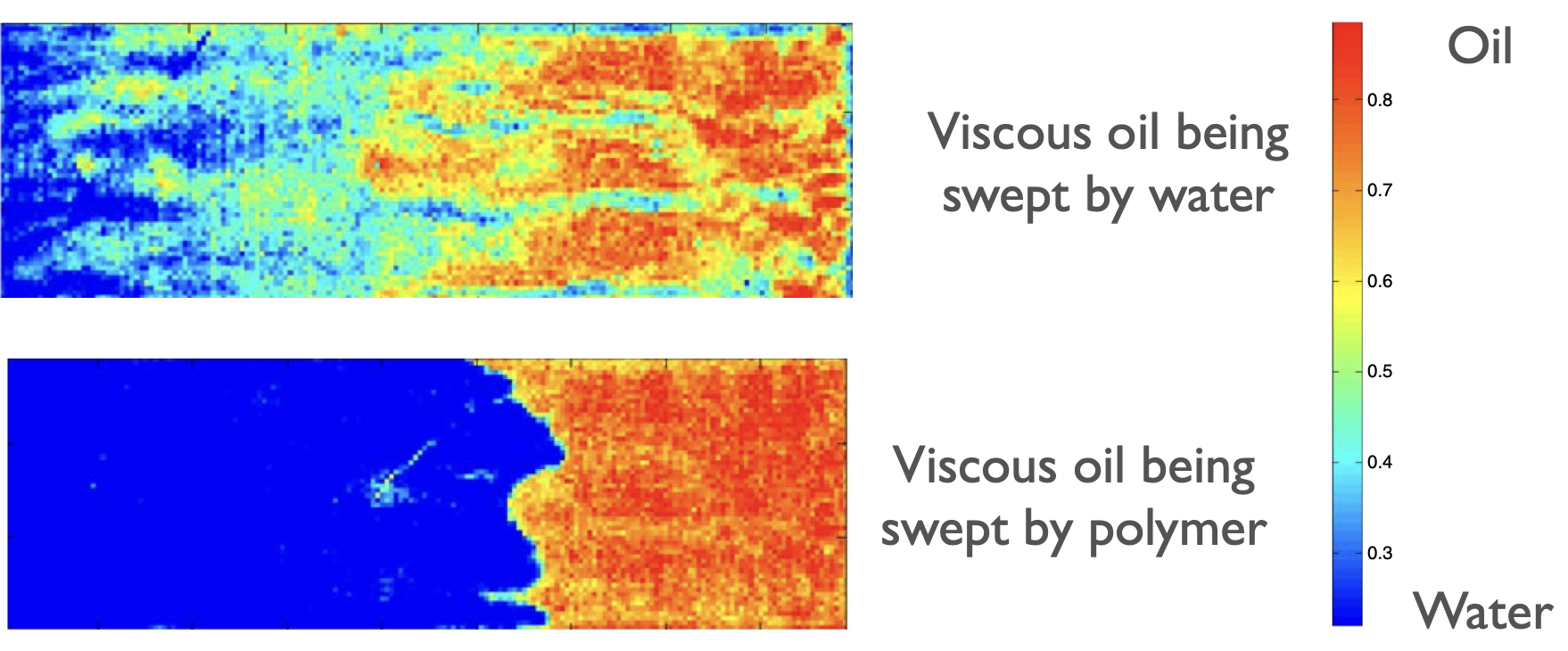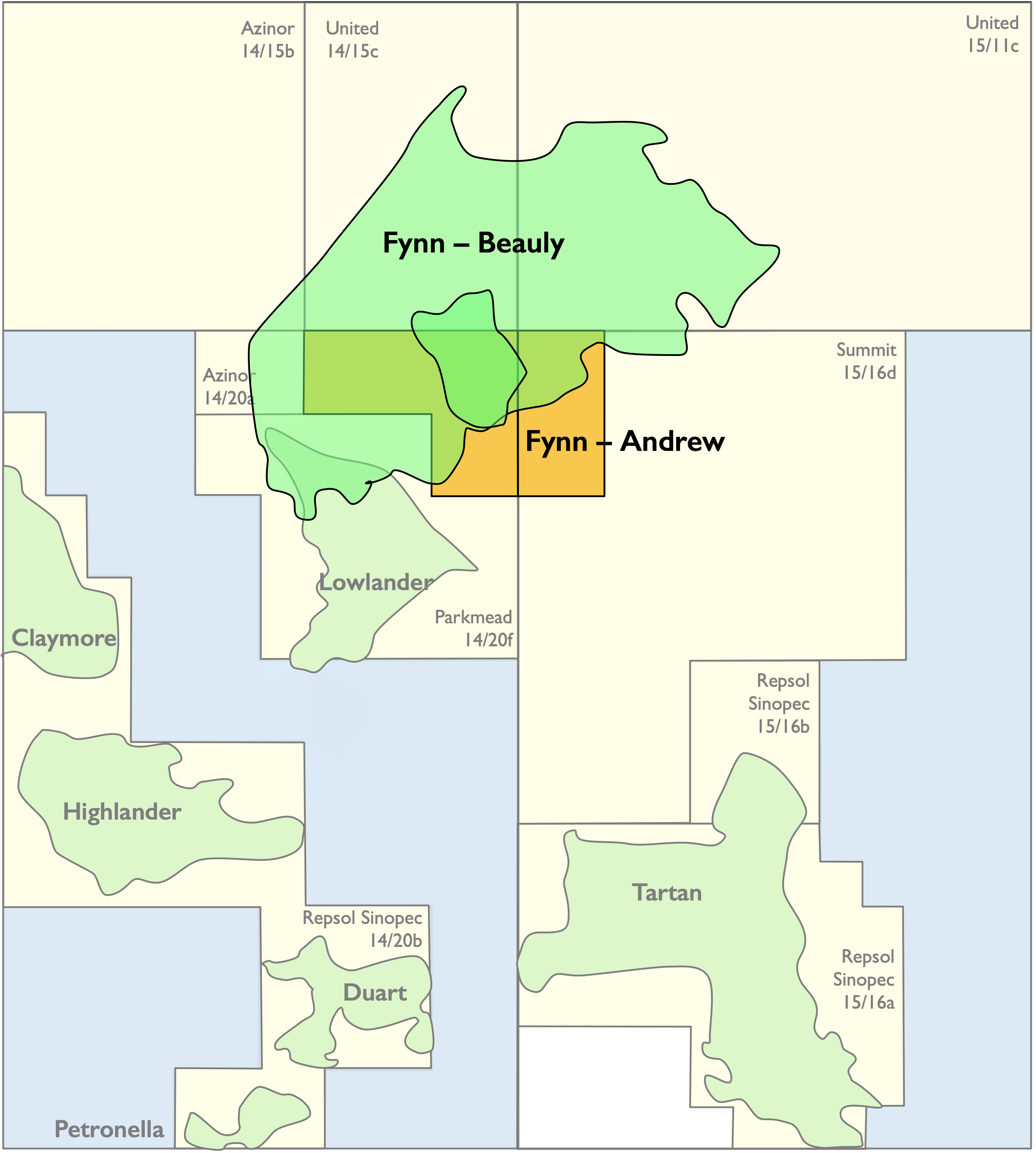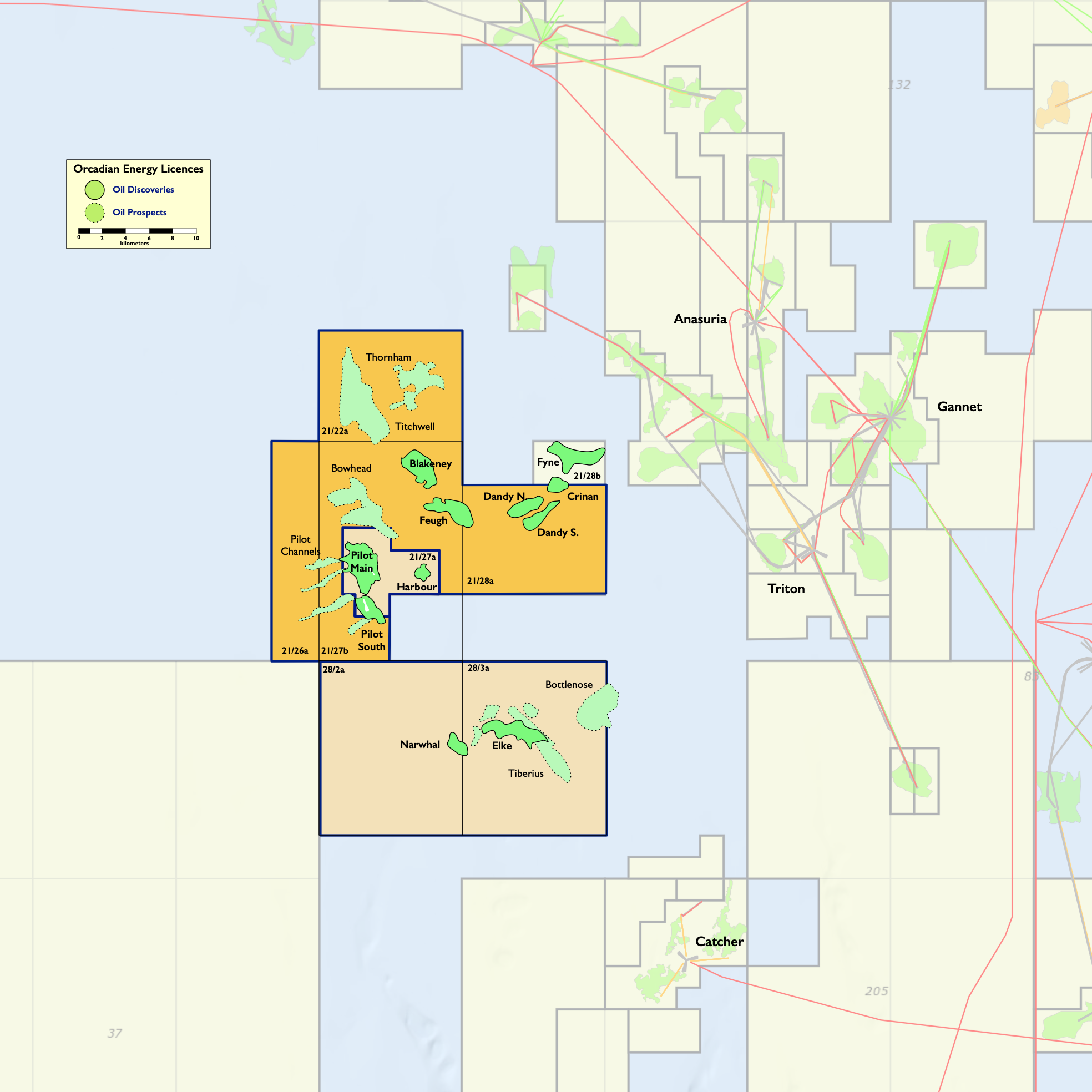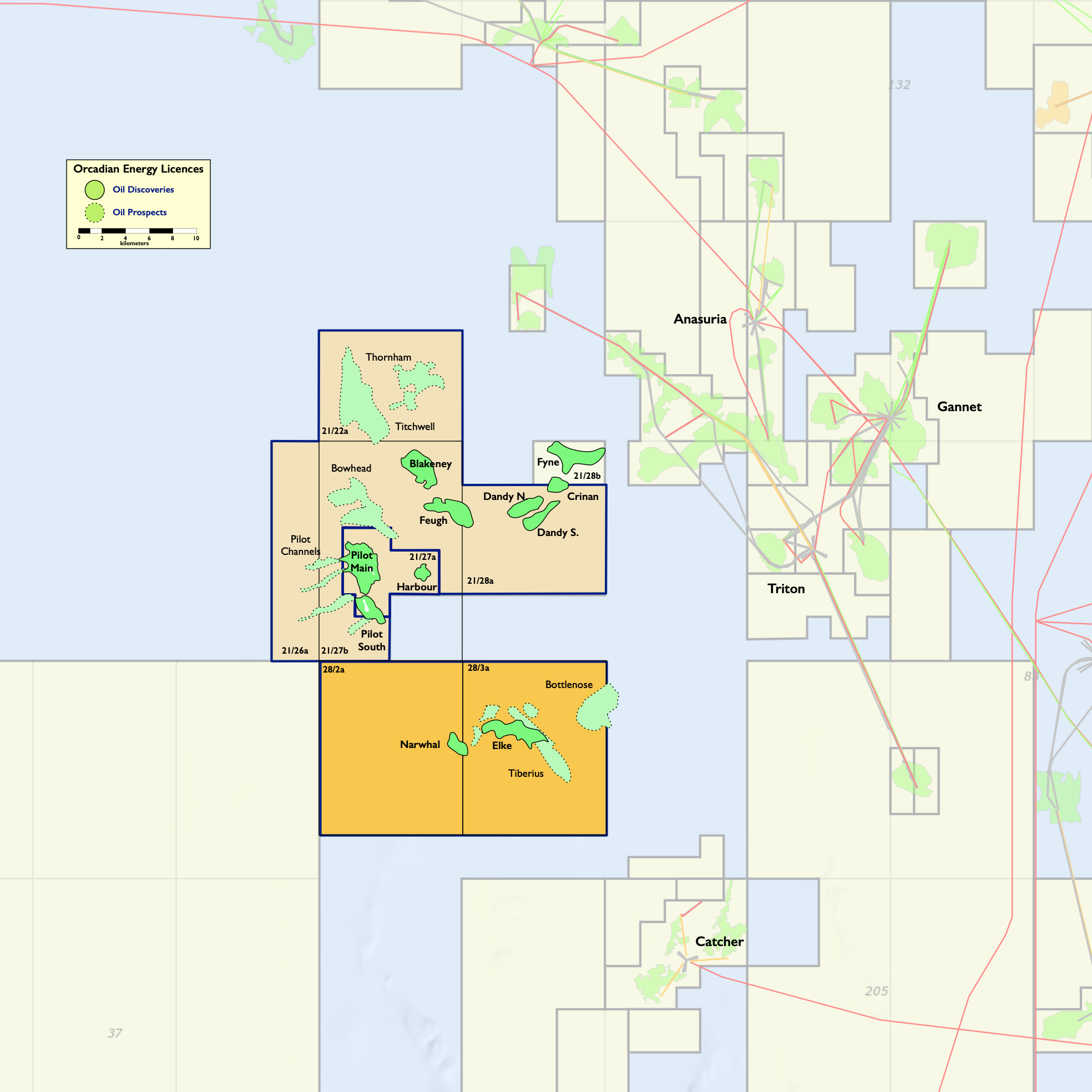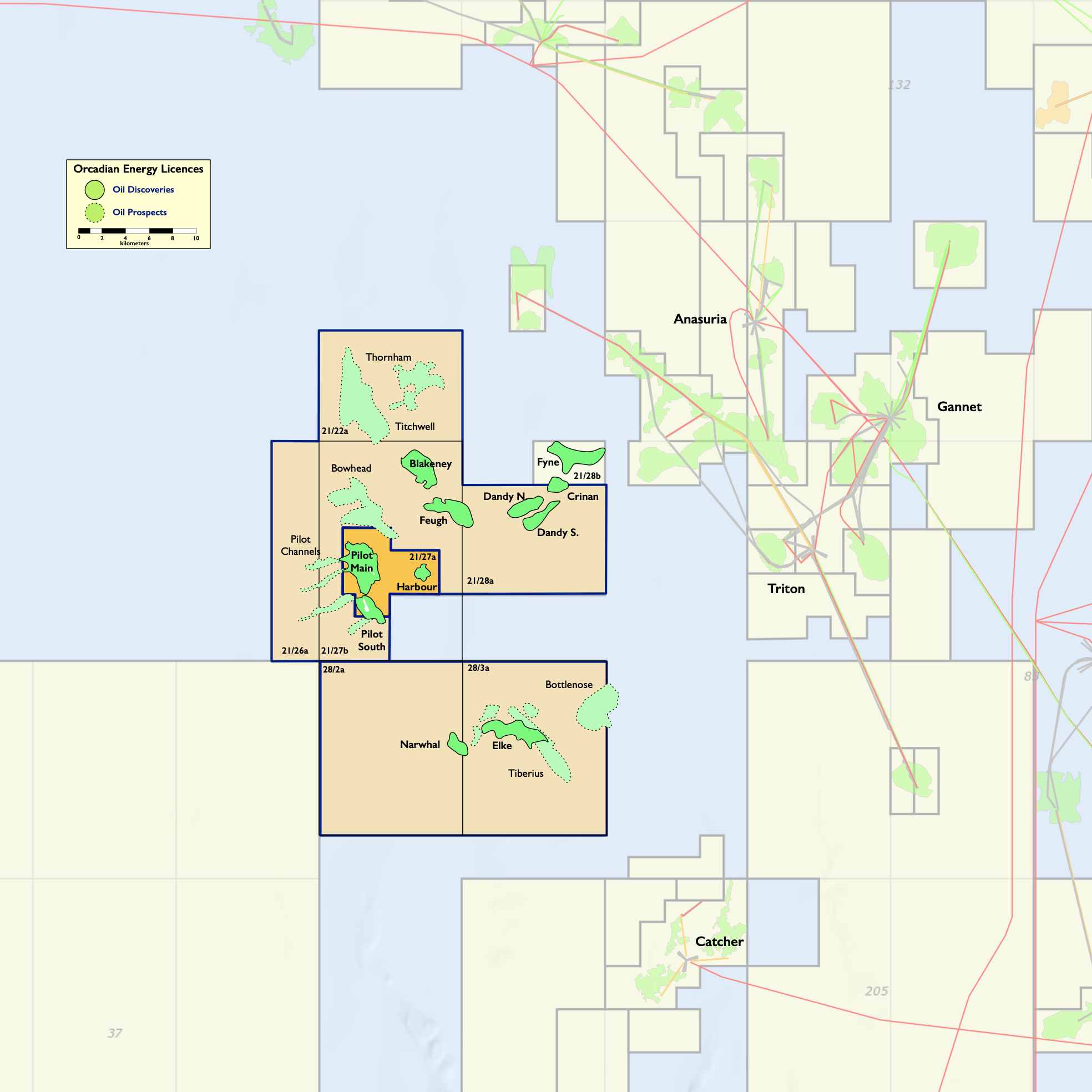What we do
Orcadian’s strategy is to secure discovered resources at low cost and to transform those resources into reserves and onto production
The Pilot field is our key asset. The field is well appraised and ready for development, Orcadian farmed down its interest in the Pilot licence to Ping Petroleum UK plc and retains an 18.75% interest in the project, carried to the first offload of production from the field. The development concept is based upon a polymer flood with a dedicated FPSO, and a renewable energy supply. The next step is to finalise the field development plan (FDP) and submit that for approval to the NSTA and OPRED.
The company has enjoyed success in the 33rd round and was awarded three licences. A licence in partnership with Serica over the Fynn Beauty discovery; a licence in partnership with Triangle over shallow gas prospects/leads on the Mid North Sea High and a licence on the border with the Netherlands that contains the Earlham discovery.
At a glance
79 mmbbls
Proven plus probable reserves
Pilot is well appraised and development ready. Orcadian has submitted a Concept Select Report to the NSTA based upon a polymer flood, the NSTA issued a Letter of No Objection in November 2021 and Orcadian submitted a draft FDP in June 2022. In March 2024 Orcadian farmed out an 81.25% interest in P2244 to Ping Petroleum UK plc. Orcadian retains an 18.75% interest in the licence carried to the first offload of production from the field.
53 mmbbls
2C contingent resources
The Elke & Narwhal discoveries can be developed using two wellhead platforms tied back to the Pilot FPSO. There are also significant appraisal opportunities on the Elke discovery with contingent resource upside of over 22 mmbbls and prospective resource potential of 61 mmbbls.
How polymer flooding works
Play VideoPolymer primer
The addition of a small amount of polymer to the injection water increases the water viscosity. The viscosified water can then sweep the oil with a stable flood front which accelerates production and increases recovery.
In our process design all produced water will be reinjected, thereby avoiding the possibility of releasing any polymer into the sea, but the polymer we add to our injection water is commonly used as a flocculant in water and wastewater treatment, and as a soil conditioner, so is not considered terribly damaging to the environment.
Experiment on 2,000 cP oil: oil saturation maps during core floods
